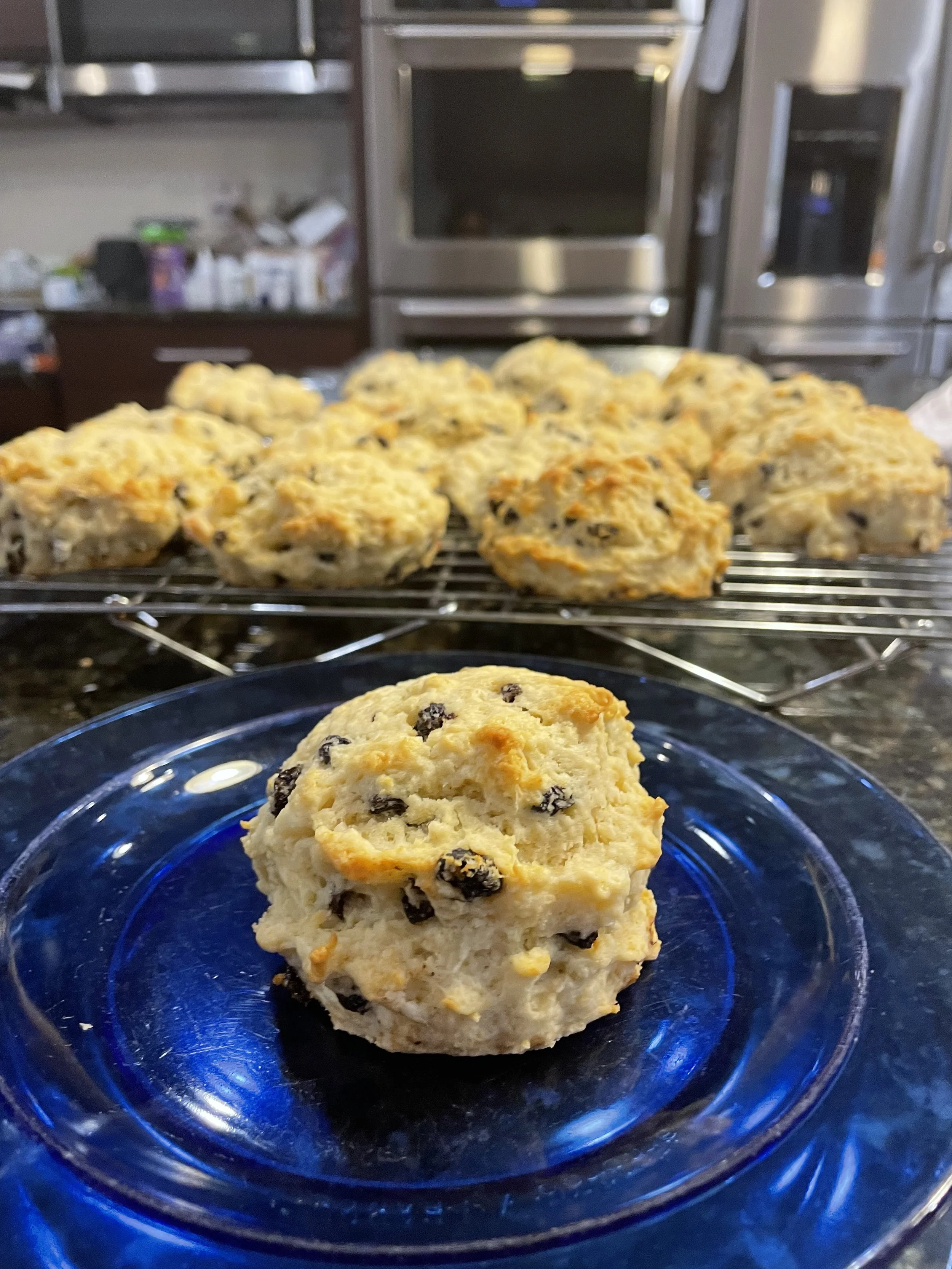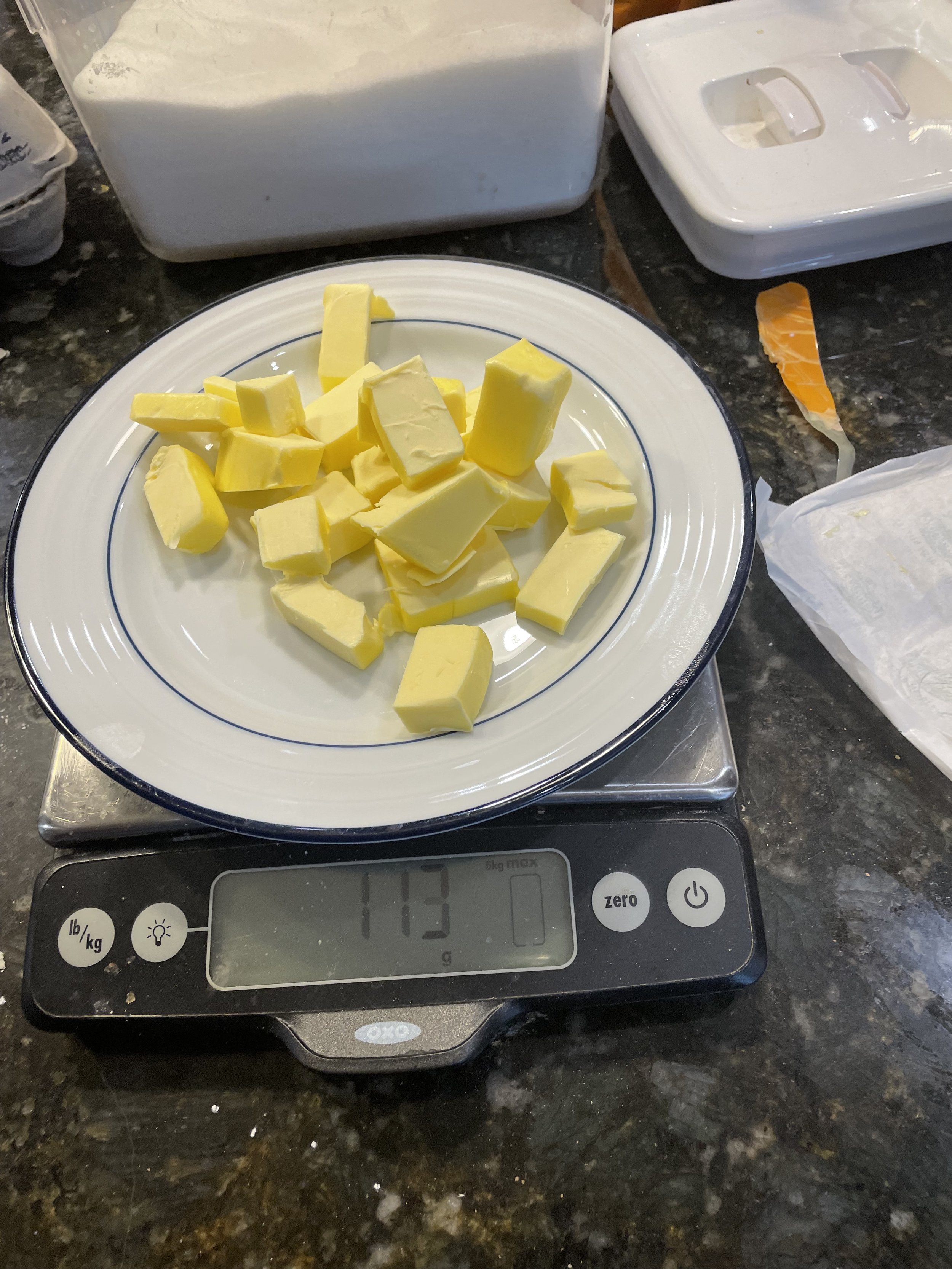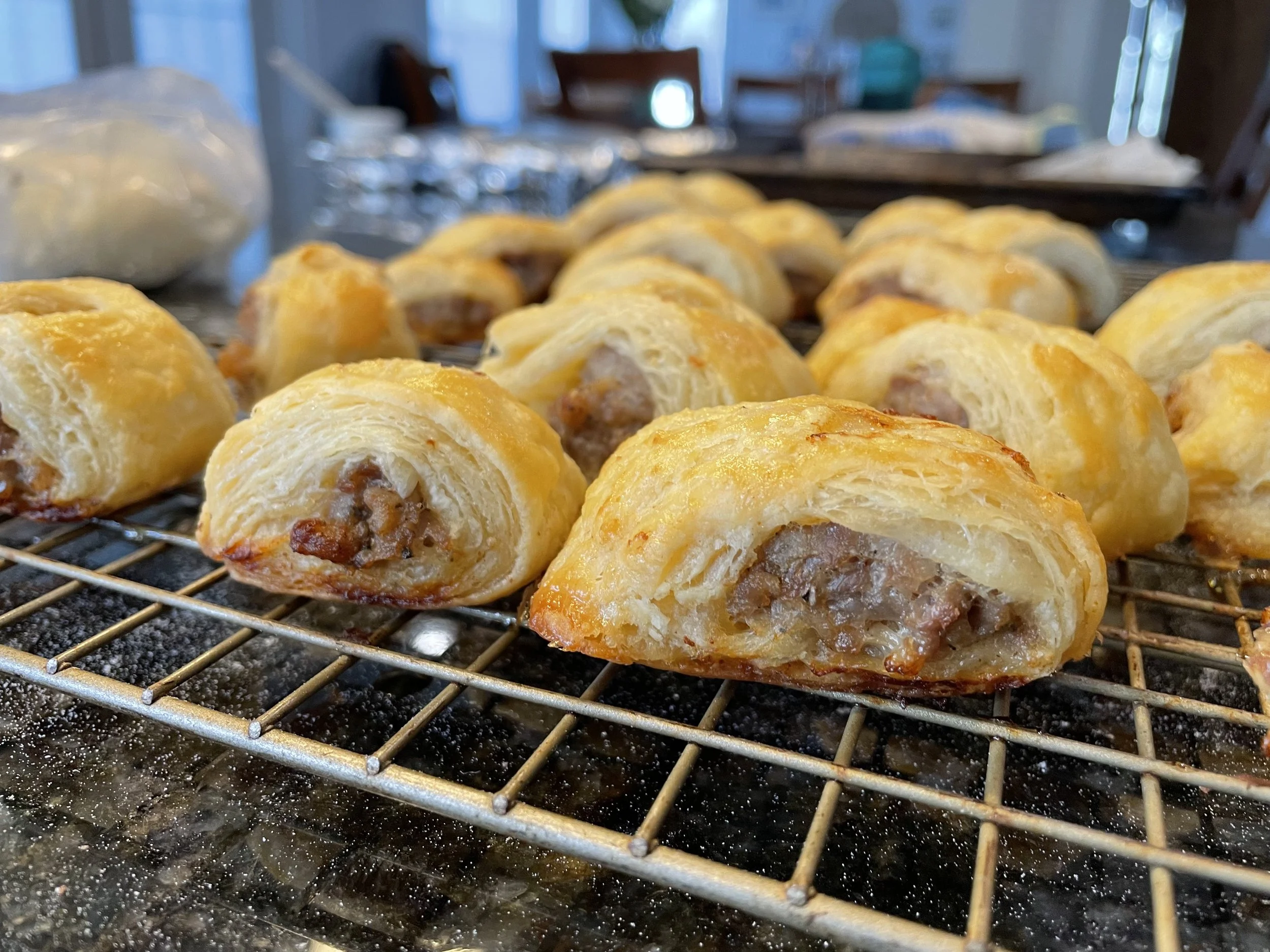Currant Scones
Nuts and Bolts:
This Currant Scone recipe has become my go-to British-style scone for afternoon tea. Also, I use this recipe as a base for most of my scones. It is adapted from a British Scone recipe from the Washington Post. These scones are more like those found in the UK, which are not glazed or super sweet. I love serving these scones with clotted cream and jam. So, give it a whirl in your mess.
My thoughts on Currant Scones:
I like to soak my dry fruit in wine or liquor for an hour to moisten the fruit and add more flavor.
Do not rush this recipe; the resting time is essential to the overall appearance of the scone.
This recipe is in grams. So, you will need a scale for this recipe.
This is an easy recipe that can be altered to make other types of scones.
Method:
You will need 143 grams of dried currants, wine, or liquor to cover (optional), 584 grams of flour, plus more as needed, 84grams of sugar, 36 grams of baking powder, 113 grams of chilled, unsalted butter, cut into 1/2-inch cubes, 250 grams of milk, plus more for brushing, and 162 grams of heavy cream.
First, I weigh out the currants, put them in a bowl, cover them with wine or liquor, and then soak for an hour or more. Before making the scones, I drain the liquid off by placing them in a colander and letting them drain. Then I put the currants in a tea towel or paper towel to squeeze out the rest of the liquid. You want them as dry as possible.
Important tip: I add liquid to dried fruit to make them moist, so they are soft in the baked goods. Yet want them plumb, but you do not want to add more liquid to the recipe. That is why I try to get the excess liquid out but still leave the fruit plumb and soft.
Weighing out the butter
After that, weigh out the flour and add it to a bowl of a stand mixer fitted with a paddle attachment. Then add sugar and baking soda to the flour. Then mix at a low speed to just combine them. Next, cut the butter into ½ inch cubes and weigh them. Then add the chunks to the bowl and run the mixer on a low speed for 4 or 5 minutes or until the mixture looks crumbly with some large chunks of butter. Then scrape down the sides of the bowl before adding the currents. After that, beat at a slow speed until the currents are covered with the flour mixture and are evenly distributed.
Mixing the dough: Left the butter being mixed into the flour mixture, Center is the currants covered in the flour, and right the finished dough.
Then start to slowly add the liquids until it forms a soft dough. Then dump the dough on a lightly floured surface, shape them into a larger rectangle, and pat it to an even thickness of about an inch to an inch and ½.
Important tip: I like to make my rectangle smaller and taller because I like tall scones. The thinner you make the rectangle, the shorter your finish scone will be.
After shaping your dough, cover it loosely with a clean tea towel and let it rest for 30 minutes. Do not skip this step.
Here are images of cutting the scones after the dough had rested for a half-hour.
Next, preheat an oven to 400°F. Then line one or more cookie sheets with parchment paper depending on the size of your scones.
When the thirty minutes are up, uncover the scones. Flour the edge of your biscuit or scone cutter and use it to cut the dough. Cut straight down without turning. Next, place the scones on a cookie sheet lined with parchment paper. Then arrange all the scones on the cookies sheet so they are at least an inch apart. After that, you can collect the scrapes and remake the rectangle. Cut more scones until you finish the dough. The second round of the scones will not be as high. Once all the scones are cut and on trays, brush them with milk. After that, place them on the middle rack of the oven and bake for 12-16 minutes.
Important tip: Depending on the size of the scone, it may bake as quickly as 12 minutes or take up to 20 minutes. Just keep an eye on them in the oven.
Once the scones are golden brown, remove them from the oven and place them on a cooling rack. They can be served once they cool for a few minutes. So give them a try in your mess.
Cooling currant scones.
Final Thoughts on Currant Scones:
This is the first recipe I found in the states that make scones that taste like ones I remember having in England. This is not a sweet scone or glazed scone. It is more like a slightly sweet biscuit they are fabulous with clouted cream and jam.

Currant Scones
Ingredients
- 143 grams of (about 1 cup) dried currants
- wine or liquor to cover the currents(optional)
- 584 grams of flour, plus more if needed
- 84 grams of sugar
- 36 grams of baking powder
- 113 grams of chilled, unsalted butter, cut into 1/2-inch cubes
- 250 grams of milk, plus more for brushing
- 162 grams of heavy cream
Instructions
- First, weigh out the currants, cover them with wine or liquor, and then soak for an hour or more.
- Before making the scones, drain the liquid off by placing them in a colander and letting them drain. Then put the currants in a tea towel or paper towel to squeeze out the rest of the liquid. You want them as dry as possible.
- After that, weigh out the flour and add it to a bowl of a stand mixer fitted with a paddle attachment.
- Then add sugar and baking soda to the flour.
- Then mix at a low speed to combine them.
- Next, cut the butter into ½ inch cubes and weigh them.
- Then add the butter to the bowl and run the mixer on a low speed for 4 or 5 minutes or until the mixture looks crumbly with some large chunks of butter.
- After that, scrape down the sides of the bowl before adding the currants, then beat at a slow speed until the currents are covered with the flour mixture and are evenly distributed.
- Next, slowly add the liquids until it forms a soft dough.
- Then dump the dough on a lightly floured surface and shape the dough into a larger rectangle. After that, pat it to an even thickness of about an inch to an inch and ½. After shaping your dough, cover it loosely with a clean tea towel and let it rest for 30 minutes.
- Next, preheat an oven to 400°F.
- Then line one or more cookie sheets with parchment paper depending on the size of your scones.
- When the 30 minutes are up, uncover the scones. Flour the edge of your biscuit or scone cutter and use it to cut the dough. Cut straight down without turning. Next, place the scones place on a baking sheet lined with parchment paper. Then arrange all the scones on the cookies sheet so they are at least an inch apart.
- Then you can collect the scrapes and remake the rectangle. Cut more scones until you finish the dough. The second round of the scones will not be as high.
- Once all the scones are cut and on trays, brush them with milk, then place them on the middle rack of the oven and bake for 12-16 minutes.
- Once the scones are golden brown, remove them from the oven and place them on a cooling rack. They can be served once they cool for a few minutes. So give them a try in your mess.
Notes
This recipe is adapted from the Washington Post's Recipe for British Scones.






